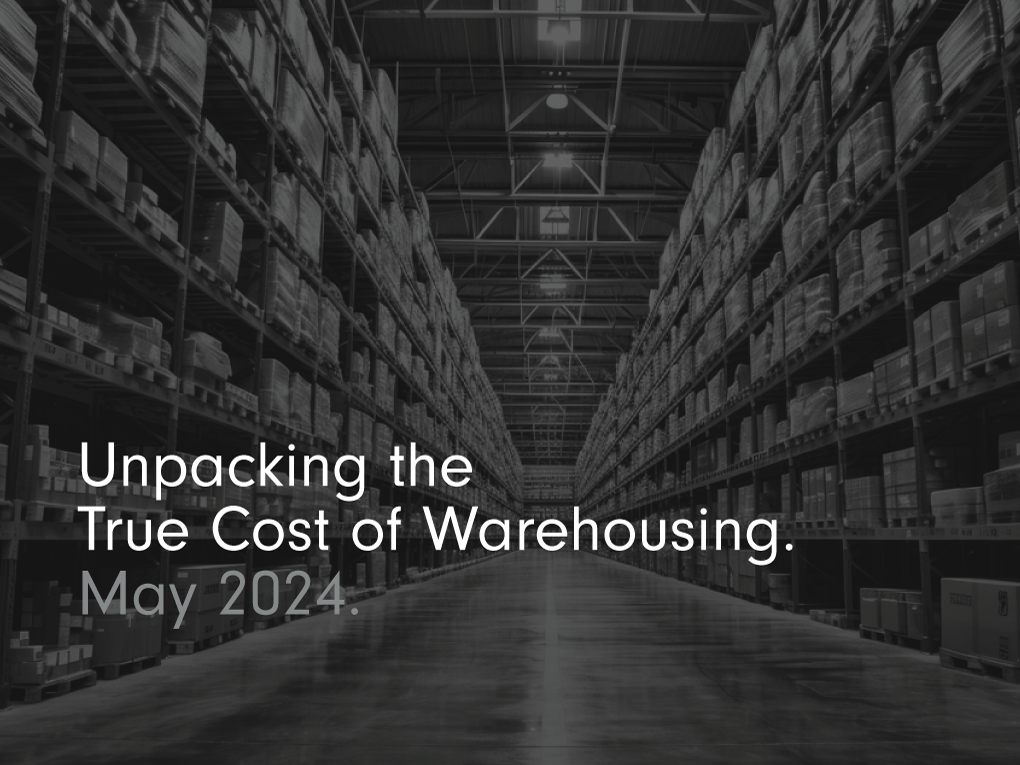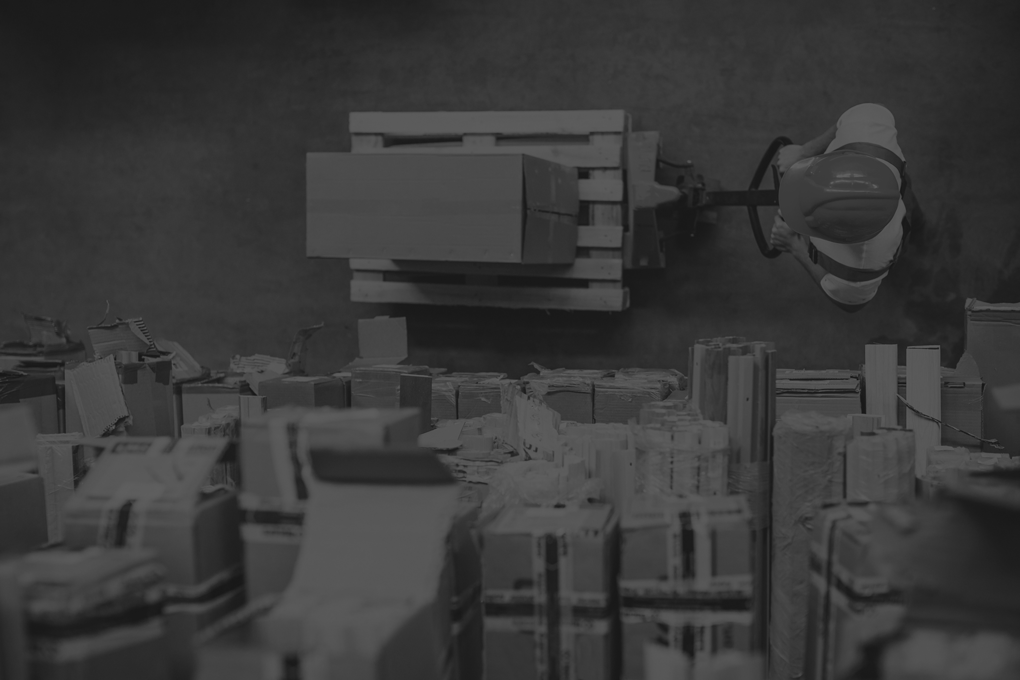Unpacking the True Cost of Warehousing.

In today’s fast-paced world of global commerce, how efficiently a warehouse runs is crucial for businesses. The boom in online shopping and the push for quicker delivery times highlight the importance of efficient warehouse management more than ever. But there’s more to it than just shipping boxes and organising inventory.
There are various costs involved, some obvious and some hidden in the details of operational inefficiencies. In this post, we’ll dive into the real costs of running a warehouse, including direct and hidden costs that can eat into your profit margins. We’ll also share tips on how to boost efficiency and cut costs, helping you make your warehouse a key player in your business’s success.
Direct Costs of Warehouse Operations.

Real Estate Expenses.
Rent or mortgage payments for warehouse space are a big expense for businesses. The cost depends on factors like location, size, and market conditions. In high-demand areas, warehouse space can be expensive.
Going for larger warehouses lets businesses store more inventory, helping them serve customers better. But, this comes with higher costs like rent or mortgage, bigger utility bills for heating, cooling, and lighting, and maybe more staff to handle everything.
On the other hand, choosing a smaller warehouse could save money on rent, utilities, and staff. But, it might limit a business’s growth and lead to stock shortages, which could disappoint customers and hurt the business’s reputation.
So, when picking warehouse space, businesses need to think about the positives and negatives of different sizes and locations. They should consider both immediate costs and long-term needs for growth and operations.
Labour Costs.
The workforce is essential to any warehouse operation, handling everything from picking and packing to detailed inventory management. Human resources make up a big part of the costs, including not just salaries but also health insurance, training programs, and other benefits that keep the team motivated and efficient. All these factors play a key role in keeping warehouse operations running smoothly.
The recent increase in the UK’s minimum wage presents both challenges and opportunities for warehouse operations. This legislative change directly influences labor costs, a major expense in warehouse management. While it ensures a fair wage for warehouse workers, it also requires businesses to reevaluate their financial strategies to accommodate the higher expenditure.
Strategic workforce planning becomes paramount to manage this increase in operational costs effectively. Businesses may need to optimise their staffing models, enhance productivity through training and technology, or restructure their operations to maintain profitability without compromising service quality. This adjustment period is crucial for adapting to the new wage standards while continuing to meet the demands of a competitive market.
Utility Bills.
Lighting, heating, cooling, and machinery operations can accumulate significant utility bills, directly impacting the cost of warehousing. Efficient use of resources and investment in energy-efficient solutions can mitigate these expenses to some extent.
Inventory and Warehouse Management Systems.
Investing in a robust Warehouse Management System (WMS) can streamline operations, reduce errors, and enhance efficiency. Technologies like the Körber WMS offer adaptability and scalability for small to mid-sized businesses, addressing direct costs by optimizing inventory levels, reducing labor needs through automation, and enhancing supply chain responsiveness. However, the initial setup, software licenses, and ongoing maintenance represent additional costs that businesses must consider.
Hidden Costs of Poor Warehouse Management.

Inventory Loss and Damage.
Poor storage conditions, mishandling of products, and weak inventory management often result in significant loss due to damage or items becoming outdated. These issues not only lead to a direct financial hit but also harm customer satisfaction and loyalty.
Inefficient Space Utilization.
A disorganized warehouse layout and ineffective storage solutions can waste valuable space, limiting how much the warehouse can hold and how efficiently it operates. Adopting smart storage practices like dynamic directed put-away and using barcode and RFID technology, as Körber’s solutions do, can greatly enhance space use and workflow.
Employee Turnover and Training.
High staff turnover often points to bigger problems like a stressful workplace or inefficient processes. The costs of finding, hiring, and training replacements can quickly accumulate, eating into profits.
Strategies for Cost Reduction and Efficiency Improvement.

Automation and Technology.
By using advanced technologies and automating repetitive tasks, companies can cut down on labor costs and mistakes. Tools like Körber WMS make it easier to customize workflows with less coding, making for an automated and flexible user experience that suits different roles in the warehouse.
Efficient Inventory Management.
Switching to a cloud-based WMS improves how well you can see and track inventory, with real-time updates that let workers quickly handle important orders and better manage stock. This helps avoid the extra costs of having too much or too little inventory.
Layout and Space Utilization.
Creating a warehouse layout that makes the best use of space and shortens the distance for picking tasks can greatly boost productivity. With tools like Körber’s Design Toolkit, it’s possible to tweak both the workflow and how users experience it, meeting specific operational requirements.
Conclusion: Understanding Warehouse Costs for Better Efficiency.
For small business owners and logistics managers, knowing and managing the various costs of warehousing is key to staying competitive. It’s not just about the obvious expenses; the hidden costs from inefficiencies matter too. Tackling these can lead to smoother operations and better profits.
Is your warehouse performing at its best? A thorough check of your warehouse operations might show where you’re losing money and where you can save. Think about using a modern, cloud-based Warehouse Management System (WMS) like the one from Körber to improve your operations. Don’t let warehousing complexities hurt your business. Improving supply chain intelligence and using better tech tools can significantly boost your warehouse efficiency and profits.
Managing a warehouse doesn’t have to drain resources. With smart strategies and the right tools, it can boost your efficiency and give you a competitive edge.
Frequently Asked Questions.
Bad warehouse management can cause you to lose or damage stock, waste space, and see high staff turnover. These problems lead to direct money loss and can upset customers and make them less loyal.
Warehouses can cut costs and work more efficiently by embracing new tech and automation, putting in place better inventory management, and making the most of their space. These steps reduce the need for manual work and mistakes, boosting productivity and operational efficiency.
Yes, putting money into energy-saving technology and methods can cut down your utility bills a lot. This means making your lighting, heating, and cooling more efficient, and ensuring machines are running smoothly.
A good WMS, like Körber’s, makes things run smoother, cuts down on mistakes, and helps organize everything by keeping track of inventory better, needing less manual work thanks to automation, and responding quicker to supply chain demands. While there’s a cost for the software and its upkeep, the payoff is in money saved and better operations over time.
Raising the minimum wage increases labour costs, pushing businesses to rethink their money management and how they run things. They might have to get better at planning their workforce, invest in training and tech to boost productivity or change how they operate to keep making a profit.